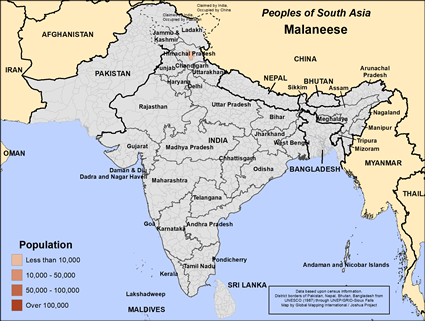The Hindu Malaneese people live in the mountainous regions of Himachal Pradesh, India, particularly in the remote village of Malana. They have a long history tied to the land and its isolation, which has helped them preserve unique traditions and a distinct way of life. Historically, the Malaneese relied on agriculture and pastoralism for their livelihood, with their village playing a significant role in the surrounding area due to its self-sufficiency and distinctive customs. Over time, tourism has also begun to influence the Malaneese economy, though agriculture remains a central part of their lives.
The Malaneese people primarily depend on agriculture and livestock for their livelihood. They grow crops like potatoes, maize and wheat relying on the short growing seasons in their high-altitude environment. Livestock, especially sheep and goats, play an important role in their economy, providing food and wool for trade. In addition to agriculture, the rise of tourism has provided new economic opportunities, with some families offering homestays and other services to visitors.
Villages are small and tightly knit, with families living in traditional wooden homes suited to the cold mountain climate. The community places a strong emphasis on self-governance, and the Malaneese follow their own system of local governance, which sets them apart from other groups in the region. Although modern influences have reached Malana, many aspects of daily life still revolve around farming, family, and religious activities.
The Malaneese people practice a form of Hinduism that includes local deities and rituals specific to their region. They worship Shiva as their primary deity, along with local gods such as Jamlu Devta, who is central to their religious practices. Religious festivals, such as the annual Fagli festival, bring the community together for prayers, dances and rituals to seek blessings for prosperity and protection.
The Malaneese maintain temples dedicated to their local gods, where community members gather for worship and important ceremonies. Their religious practices often tie directly to their agricultural cycles, with prayers and offerings made to ensure good harvests and the health of their livestock.
The Malaneese people face several challenges, particularly related to healthcare, education and infrastructure. Due to the remote location of their village, access to healthcare services is limited, with families often traveling long distances to reach medical facilities. Education is also a critical need, as schools in the region may lack resources and quality teaching staff. Improving access to education would provide more opportunities for younger generations to explore careers beyond agriculture.
The community's reliance on traditional farming methods makes them vulnerable to environmental changes. Improved access to modern agricultural tools and sustainable farming techniques could help stabilize crop yields and provide greater economic security. Development programs that focus on improving infrastructure, such as roads and access to basic services, would greatly benefit the Malaneese people.
Pray that the Spirit of wisdom and revelation would reveal who Jesus really is, rather than any wrong ideas from people who have misrepresented him in the past.
Pray that the Bible would be easily accessible in their language.
Pray that they would see the God of creation as the one who provides life, health and protection.
Pray for such a powerful transformation in their lives as they find identity in who God created them to be.
Scripture Prayers for the Malaneese in India.
Ethnologue: Languages of the World
Reports from Indian NGOs on rural development in Himachal Pradesh
Academic research on agricultural practices in the Himalayan region of India
| Profile Source: Joshua Project |











